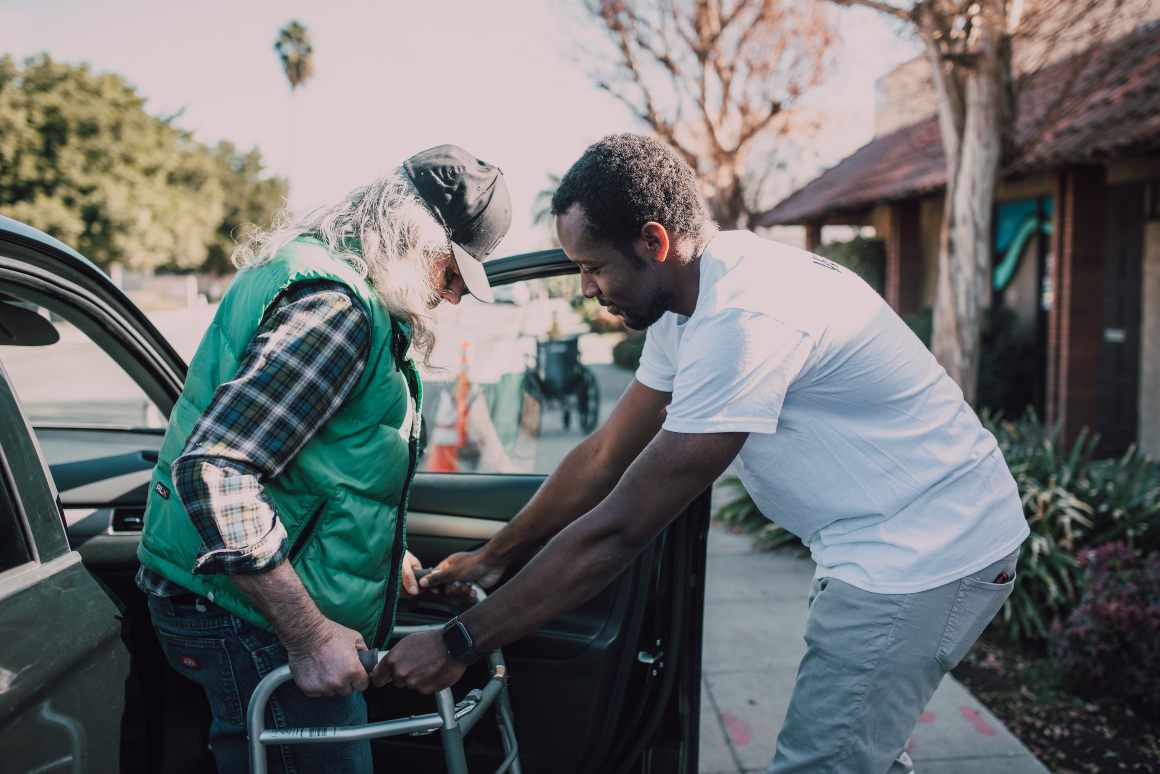
Mobility walkers are assistive devices that provide support and stability for those with gait and mobility problems. There are many types of walkers available, and each one is designed to meet specific needs and requirements. Whether you or someone you know needs a walker, you may wonder which type is the most appropriate. Let’s review the most common ones:
1. The Standard Walker
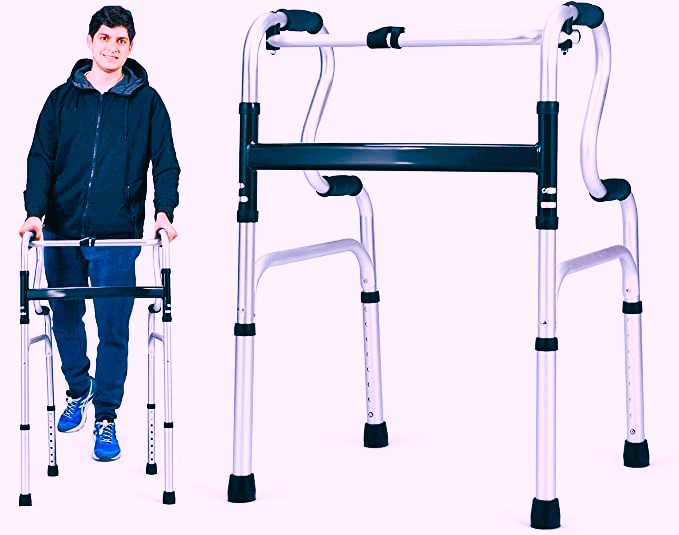
The standard walker is the most basic type of mobility walker. However, in my experience, is not very commonly used, and for a good reason. It consists of a very basic and lightweight aluminum frame with four legs. While it provides decent stability and support to the user, it is tedious and hard to use. The person lifts the walker and moves it forward, then proceeds to step forward into the walker.
Standard walkers are most often appropriate for people who are partial or non weight bearing (usually due to an orthopedic injury/recovery) on one leg AND have significant upper body strength and stability. It can be very exhausting to ambulate even short distances with it! Alternatively, one can, and typically will use crutches or a knee walker as a means of non/partial weight bearing.
2. Two-Wheeled Walker
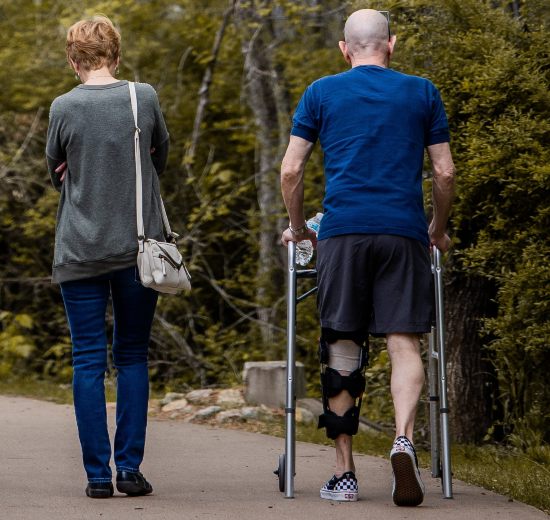
The two-wheeled walker, also known as a front-wheeled walker, rollator, or just a rolling walker, looks quite similar to the standard walker except it has two wheels on the front legs. This walker, however, is far more common and is much easier to maneuver. The user simply pushes the walker at a steady pace while keeping it close. The two wheels in front make it easier to navigate, reducing the effort required to use the walker.
Two-wheeled walkers are most appropriate for those who need more support than a cane — but are not quite ready for a four-wheeled walker, which we will also discuss.
Tennis balls or “flights” can be added to the back legs for a smoother ride, which will also protect your home’s floors. Tennis balls do not work well on pavement as they tend to stick, so get flights if you plan on using it for outdoor ambulation.
Remember to keep the walker close to you when ambulating with it. Ideally, your feet should line up near the back legs.
3. Three-Wheeled Walker

The three-wheeled walker, also called a tri-walker or a rollator, is a walker with three wheels. Its lightweight aluminum frame includes two wheels on the back and one on the front. Like with the two-wheeled walker, the user pushes the walker forward while keeping it close. However, it does have brakes beneath the handles, which can take some getting used to, but makes the device safe and easy to use. The three wheeled design makes it easier to maneuver, and the walker can be comfortably used indoors as well as outdoors on uneven ground.
These rolling walkers conveniently collapse for easy transport and storage and even have a huge pocket in the middle!
The next type of rolling walker is probably my favorite. Moving on…
4. Four-Wheeled Walker

The four-wheeled walker, also known as a rollator or just rolling walker, is a walker with, well, four wheels. It has a lightweight aluminum frame with two wheels on the front and two on the back. Like the previously mentioned rolling walkers, the individual pushes the walker forward, while staying with it. Like the three-wheeled walker, this one also has brakes.
There are 2 ways to use the brakes; first, you can squeeze them gradually, kind of like hitting the brakes of a car. This is good for maneuverability. The second way is to push them downward to lock them, like the e-brake of the car. This allows the user to sit down! Yes, these rolling walkers have seats AND when you open the seat cover, it contains a large pouch (most do, anyway). Just remember to lock this walker BEFORE sitting down.
The only downside, really, is that most models are heavier and bulkier, thus much more difficult to transport than the two-wheeled walker version.
5. Knee Walker

A knee walker, or knee scooter, is a mobility device typically designed for those who are non-weight bearing after an orthopedic surgery. It has a platform for the knee to rest on and four wheels. So it’s more of a scooter than a walker. The user propels themself forward by pushing off the ground with the uninjured leg, while the injured one rests on the platform. Knee scooters provide excellent support and stability, making mobility relatively quick and easy!
6. Hemi Walker
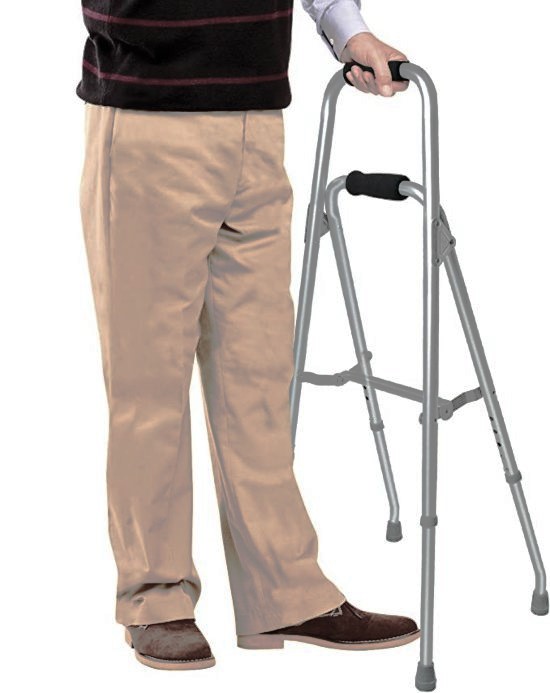
A hemi walker is designed for people whose mobility is severely limited on one side of their body, usually due to a stroke. It is more like a big, clunky cane with 4 legs. Its lightweight aluminum frame with four spread out legs provides excellent support.
People who have suffered moderate to severe strokes usually present with profound weakness on one side of the body. They don’t have the strength to grasp a walker with the affected side but can bear weight, however. The hemi walker is often the only option for these types of people, and in my experience, they can work wonders.
These can also be useful for anyone who struggles to use a cane due to its lack of stability and support but refuses to use a four-wheeled walker.
Can I take my mobility walker on a plane?
Yes indeed, you can bring a mobility walker and most other assistive devices in the passenger cabin of an airplane according to the US Department of Transportation. It can be stowed in an overhead compartment, under the seat that’s in front of you, or in a designated stowage area if your device fits and is in accordance with FAA or foreign safety regulations.

In fact, if your assistive device is unable to be stowed in the passenger cabin as carry-on baggage, the good news is that it can be stored as cargo at no extra charge. In my opinion, I would recommend traveling with a two-wheeled walker, as they are light and very easy to fold up and stow unlike most four-wheeled walkers.
Does Medicare Cover a Rolling Walker?

Medicare.gov states that Medicare Part B covers walkers (like rollators) as durable medical equipment or DME and the walker has to be medially necessary. It also must be prescribed by your physician. Once you have met the Part B Deductible, you only pay 20% of the Medicare-Approved amount. In short, I would call your primary care physician’s office and explain that you need a walker. The same goes for different types of canes. But for a single point (standard) cane, it’s probably just easier to buy one at your local drug store for 15 bucks.
How Often will Medicare Pay for a Walker?
Unfortunately, Medicare will pay for a new walker once every 5 years according to GoHealth. However, if you require a new walker before then, Medicare may cover the cost of repairing it. In some cases, Medicare will replace the walker if it was lost, stolen, or heavily damaged.
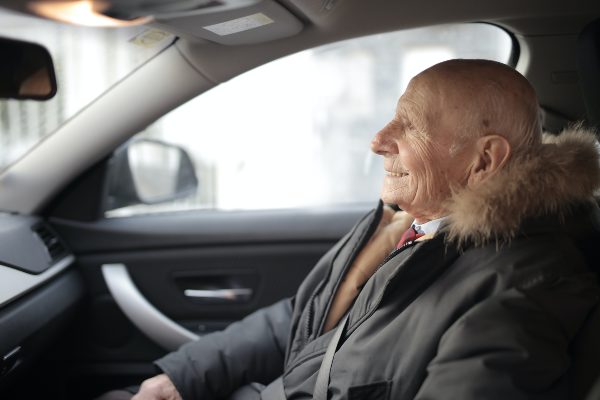
If you can’t get your walker covered by insurance or you don’t want to go through all the hassle, you can go on a site like Amazon and buy it there. On a budget? Go to a thrift or 2nd hand store and buy it there where they are quite affordable. And make sure you at least test the brakes before buying it used!
If the four wheeled walker is your assistive device of choice, but you drive and/or live alone, it may be very challenging to transport it. Alternatively, you may consider using the two-wheeled walker for transport as it is easy to lift, fold up, and store.
The type of mobility walker that is best suited for your or your loved one really depends on one’s specific needs as well as personal preference. In many cases, people switch back and forth or they graduate from a two wheeled to a four wheeled walker. Hemi walkers are specific for those with profound weakness on one side of their body, and knee scooters pertain to those who cannot bear weight due to injury.
Walkers aren’t typically very expensive. If price matters, you may be able to order one through your doctor’s office or insurance company. Alternatively, 2nd hand stores or thrift stores almost always have them for very cheap. If you or someone you know needs a mobility walker, I hope this article helps!
Sources:
Wheelchairs and Other Assistive Devices | US Department of Transportation
Walkers For Seniors Coverage (Medicare.gov)
Does Medicare Cover Walkers, Canes, Wheelchairs or Scooters? | GoHealth
Marcus is a licensed physical therapist assistant and enjoys writing blogs relative to his profession. He’s been a home health therapist since 2018 and focuses on a holistic approach to health and wellness to help heal the mind, body, and spirit.
About the author : DynamicWellnessRx
Join our mailing list today
Insider offers & flash sales in your inbox every week.
Curabitur non nulla sit amet nisl tempus convallis quis ac lectus dolor sit amet, consectetur adipiscing elit sed porttitor lectus.




